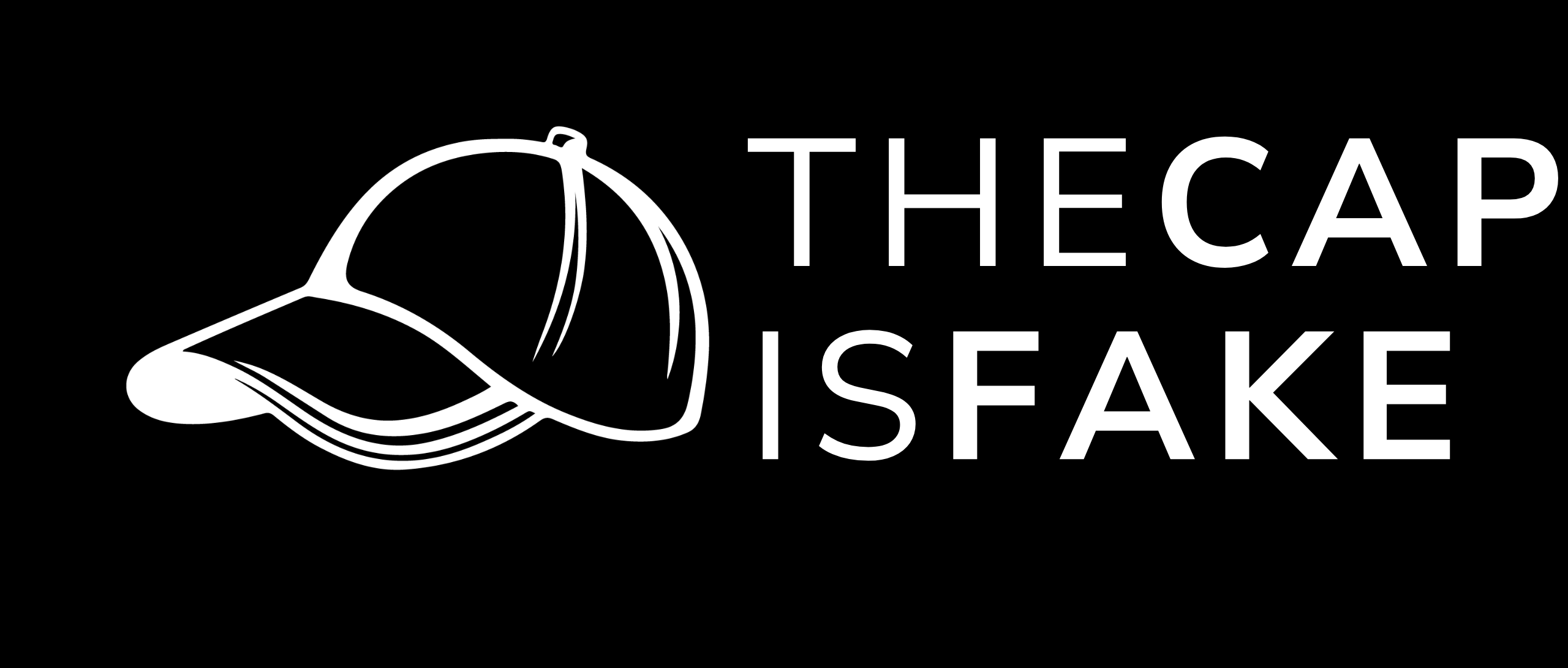
Jalen Hurts and the Eagles Prove the Salary Cap is Fake
Going into the 2023 regular season, Eagles all-pro QB Jalen Hurts was headed into the final year of his rookie contract. He was scheduled to make $4.2 million.
However, in early April 2023, Jalen Hurts signed a 5-year, $255 million contract extension, with $179.3 million guaranteed. On a per year average, this is the richest contract ever signed by any player ever in NFL history at $51 million per season.
Immediately, the “salary cap hell” chatter began. A significant chunk of people (especially Giants and Cowboys fans on Twitter) began to proclaim that the Eagles would not be able to afford to build a good team around Hurts in coming years.
Many people are convinced that once an NFL team commits a large dollar amount to one player, then the salary cap will limit the team’s ability to add other quality players to the roster. But the structure of the Jalen Hurts contracts proves that’s simply not true.
Magic Sauce: Four “Dummy” Years
Here’s the real magic sauce. Hurts’ contract is reported to be a five-year extension, plus the one year that was already on his contract. This means that the Eagles have Hurts under contract for six seasons (through 2028).
However, the Eagles also have four “dummy” years built into the contract, so Hurts’ contract technically goes through 2032. The last four years of the deal (2029 to 2032) void automatically, so Hurts is scheduled to become a free agent after the 2028 season. This “dummy years” tactic allows the Eagles to stretch-out the bonus monies over a longer period of time through the 2032 season.
Hurts received a $23.3 million signing bonus the day he signed the contract and that bonus was prorated over the first five seasons of the deal.
In addition, every time the Eagles pay a bonus during the contract, they can stretch out those numbers over five seasons. If they only have a six year deal, and pay Hurts a bonus in year three or year four, they can only prorate those bonuses over 2 to 3 years, making the cap hit much bigger. But with the “dummy years” the Eagles can prorate the monies over a longer period of time. The bonus payouts and their proration:
- $38.88m bonuses in 2024, prorated 2024 to 2028 at $7.78m/year
- $40.83m bonuses in 2025, prorated 2025 to 2029 at $8.17m/year
- $49.88m bonuses in 2026, prorated 2026 to 2030 at $9.98m/year
- $49.66m bonuses in 2027, prorated 2027 to 2031 at $9.93m/year
- $49.60m bonuses in 2028, prorated 2028 to 2032 at $9.92m/year
Each season the Eagles can pay Hurts a big number, but Hurts’ salary cap hit from 2026 to 2028 will be much smaller than it would have been without those dummy years.
But, of course, the monies that are “scheduled” to hit the cap in 2029, 2030, 2031, and 2032 will all accelerate and hit the cap in 2029. Meaning, Hurt’s salary cap hit in 2029 will be astronomical. How do teams handle those massive cap hits? I’ll tackle that question at the end of this article.
Hurts’ Contract Structure
| Jalen Hurts’ Full Official Contract Signing Bonus (April 2023): $23.3 million |
|||||
| Base | Signing Bonus Allocation |
Other Bonus(es) Paid |
Other Bonus Cap Allocation |
Total Cap Hit |
|
| 2023 | $1.01m | $5.16m* | $0 | $0 | $6.17m |
| 2024 | $1.13m | $4.66m | $38.88m | $7.78m | $13.58m |
| 2025 | $1.17m | $4.66m | $40.83m | $15.95m | $21.78m |
| 2026 | $1.22m | $4.66m | $49.88m | $25.93m | $31.8m |
| 2027 | $1.35m | $4.66m | $49.66m | $35.86m | $41.87m |
| 2028 | $1.39m | $0 | $49.6m | $45.8m | $47.2m |
| 2029 | Void | $0 | $0 | $38m | $38m |
| 2030 | Void | $0 | $0 | $29.83m | $29.83m |
| 2031 | Void | $0 | $0 | $19.85m | $19.85m |
| 2032 | Void | $0 | $0 | $9.92m | $9.92m |
As you can see in the table above, Hurts is not even scheduled to be on the team from 2029 to 2032 (those years will void out), but the total sum of the anticipated cap hits from 2029 to 2032 is $97.8 million. That’s the secret sauce to this contract. The Eagles are pushing $97.8 million of the monies beyond the six years of the contract itself.
Of course, as I alluded to earlier in this article, this is sort of a faux tactic. The monies are prorated through 2032 to bring the cap numbers down, but if Hurts does indeed become a free agent after the 2028 season, then the full sum of those “pushed” monies (the full $97.8 million) will accelerate and be fully charged against the 2029 salary cap as “dead money.”
So the actual Jalen Hurts contract ends up looking like this:
Jalen Hurts’ Actual Contract |
|||
| Cash Payments (Base + Bonuses) |
Total Cap Hit | ||
| 2023 | $24.31m* | $6.17m** | |
| 2024 | $39.93m | $13.58m | |
| 2025 | $42m | $21.78m | |
| 2026 | $51.1m | $31.8m | |
| 2027 | $51.1m | $41.87m | |
| 2028 | $51m | $47.2m | |
| 2029 | Void | $97.8m (dead money) | |
**Includes the $485,000 of leftover bonus money from Hurts’ rookie contract.
What’s the Real Guaranteed Number for Hurts?
The contract was reported as including $179.3 million guaranteed. But that number is actually (kind of) inflated. Agents often report inflated figures to the media. Hurts’ agent can now go around saying that she negotiated the richest contract ever and Hurts can claim to be the highest paid player in NFL history. Let’s be frank, it’s an ego stroke.
The Hurts contract is actually only $110 million guaranteed. This included a signing bonus of $23.3 million dollars.
Then, over the next four seasons (2023 to 2026) $86.7 million of the monies paid to Hurts are fully guaranteed. Over that time period, the Eagles are scheduled to pay Hurts a total of more than $134 million, but only $86.7 million of that sum is fully guaranteed at signing (that $86.7 million plus the $23.3 million signing bonus equals the $110 million).
So even if the Eagles were to release or trade Hurts at any point over the next four years, the Eagles would still be on the hook for those guaranteed dollars.
The Eagles could, in theory, release Hurts anytime between now and March 2024 without owing him more than that $110 million. Now, let’s be real, if the Eagles did release Hurts in March 2024, they would have paid Hurts $110 million for just the 2023 season. That would be a total disaster. The probability of the Eagles releasing Hurts before March 2024 is nearly zero.
But where did that $179.3 million number come from?
The simple answer: The $179.3 million sum includes monies that are fully guaranteed at the time of signing (the $110 million) as well as monies that will eventually become guaranteed. A significant chunk of the future payments that are built into the contract are not fully guaranteed at the signing of the contract, but are scheduled to eventually become fully guaranteed ahead of the time that those payments are actually due.
For example, Hurts is due $51.1 million of payments during the 2026 season. But only apx. $3.8 million of that sum is fully guaranteed at the signing of the contract, leaving apx. $47.3 million of that $51.1 million sum as not guaranteed. However, the balance of that $51.1 million will actually become fully guaranteed during the 2024 and 2025 seasons.
Also, Hurts is owed $51 million during the 2027 season, but 0% of that sum is guaranteed at signing, while $22 million of that sum becomes fully guaranteed during the 2026 season. Basically, the Eagles are guaranteeing chunks of money one year before its due.
The contract structure looks like this:
- $110 million guaranteed at signing (including $23.3 signing bonus)
- $69.3 million will eventually become guaranteed before they’re due
- $80.14 million are never guaranteed, to be earned throughout the contract
As long as Hurts stays healthy and doesn’t totally suck in 2023 and 2024, he’ll be on the roster in 2025 and 2026, therefore we can expect that the $179.3 million will eventually become fully guaranteed.
Hurts’ guaranteed money schedule looks like this:
- $23.3 million signing bonus (paid immediately)
- $82.9 million in salaries and bonuses due 2023 to 2025 (fully guaranteed)
- $51.1 million due throughout 2026 ($3.8 million guaranteed at signing; $16.5 million becomes guaranteed during 2024 season; additional $30.8 million becomes guaranteed during 2025 season)
- $51 million in salaries and bonuses due throughout 2027 ($22 million becomes guaranteed in March 2026)
Hurts will need to wait until 2025, 2026, and 2027 before he sees the biggest payments of the contract, but by March 2024 he’ll know for sure that the majority of those big payments will be fully guaranteed no matter how he performs in 2024 or 2025.
What Do Teams Do When They’re in “Cap Hell?”
Sometimes teams find themselves in tight salary cap situations. For example, with this Jalen Hurts contract, the Eagles are scheduled to take $42+ million cap hits in 2027 and 2028 and a “dead money” cap hit of $97.8 million in 2029. Will their roster be in shambles?
In reality, when the Eagles need to take some of those big salary cap hits, what they will most likely do is sign new players using future cap allocations. They’ll effectively “borrow” from the future to pay for the present. Think about it, that’s exactly what they just did with this Jalen Hurts contract.
Teams with tight salary caps can still sign new players if they want. They simply do what the Eagles just did Jalen Hurts. They give the players cash now, but account for it down the road. Teams can give players large amounts of cash but account for it in the future, like thus Hurts deal.
The Eagles are going to give Jalen Hurts well over $100 million in the first three years of this contract and yet he will barely count for approximate $40 million in total salary cap allocations over those three seasons. They could simply repeat this sort of process with future players.
Back-loading contracts and utilizing the “dummy years” tactic allows teams to prorate the monies over a longer period of time, giving them the opportunity to add talent in the short-term, no matter what their current salary cap situation might be.
So, in 2028 or 2029, if the Eagles want to add talent, even if they are up against the cap, they will still be able to add players. There’s no such thing a salary cap jail or salary cap hell.
How Do Teams Handle Huge Cap Hits?
1) First option: Take the hit. The team in tough salary cap situations could simply absorb the huge cap hit. As the salary cap continues to rise, this will be less detrimental in the years to come.
For example, when the Eagles are slated to take the $97.8 million dead money cap in 2029, the salary cap will likely be near or above $320 million. Taking a $90+ million cap hit is substantial, no matter what the salary cap limit is, but it’s far less detrimental against a $320+ million salary cap than versus a $224.8 million salary cap.
If, by 2029, the Eagles roster is terrible, and if they’ve drafted badly, and if the rest of the team is not likely productive, then it might make sense for them to let Jalen Hurts walk as a free agent after 2028; they’d simply take the massive dead money cap hit in 2029, recognize that they’re going to suck that year, and then just sort of seek to reset/reload in 2030 and beyond.
Of course, while doing any such reset/reload, the actual cash that owner Jeffrey Laurie would be spending on the roster, in that particular season, would be significantly lower than what he’s likely accustom to spending. With that in mind, 2029 could become one of the more profitable seasons for the Eagles’ owner. Fans might not care about profits, but obviously the owner does. That very well could play a factor if/when that time comes.
2) Second option: Restructure contracts. Many teams do this every off-season. Dozens of contracts get restructure every year. Teams in tough salary cap situations can elect to restructure contracts with current players.
Quite frankly, this is the most likely scenario with the Eagles and Jalen Hurts. Going into the 2029 season, Jalen Hurts will only be 30 years old. Presumably, he’ll still be a productive quarterback. The Eagles will simply seek to restructure his deal. They’ll probably extend his contract beyond 2029, give him a boatload of new cash, and use dummy years to stretch out the monies until 2035 or 2036.
Conclusion
Jalen Hurts got a boat-load of cash from the Eagles. And the deal is structured in a manner that gives the Eagles continued salary cap flexibility. The structure of this contracts proves that teams can give players lots of money and account for it in the future.
The current salary cap structures and limits never impede any team’s ability to sign or acquire a player. There might be other factors that stop a team from being able to sign a player, but the salary is not ever one of those factors. Quite frankly, the cap is fake.
Kenny is the chief content creator for thecapisfake.com and contributor at walterfootball.com. He’s also a adjunct professor, Christian minister, author, entrepreneur, and overall sports fanatic.


